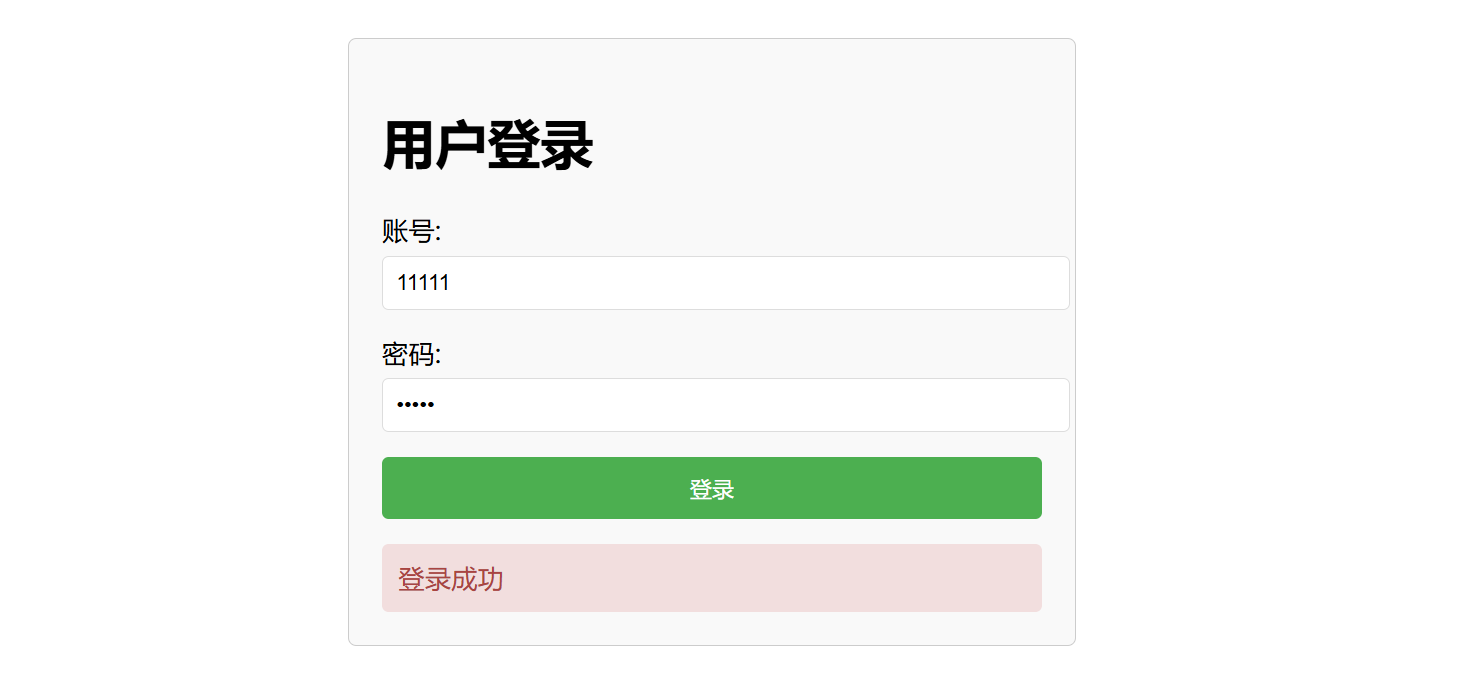初次使用Spring boot3+vue3前后端分离的实现
这是我第一次尝试使用前后端分离的spring boot+vue实现简单项目,除去我安装各种插件,依赖,配置环境变量的时间,我学习并制作了大概2到3小时。这只是初次的尝试,我之后会将其运用在我的其他项目里。
后端:
com/example/demo/comtroller/AuthController.java:
package com.example.demo.controller;
import com.example.demo.entity.User;
import com.example.demo.repository.UserRepository;
import org.springframework.beans.factory.annotation.Autowired;
import org.springframework.http.ResponseEntity;
import org.springframework.web.bind.annotation.*;
@RestController
@RequestMapping("/api")
public class AuthController {
@Autowired
private UserRepository userRepository;
@PostMapping("/login")
public ResponseEntity<String> login(@RequestBody User loginUser) {
System.out.println("收到登录请求: " + loginUser.getAccount() + ", " + loginUser.getPassword());
User user = userRepository.findByAccount(loginUser.getAccount());
if (user != null) {
System.out.println("数据库用户: " + user.getAccount() + ", " + user.getPassword());
}
if (user != null && loginUser.getPassword().equals(user.getPassword())) {
return ResponseEntity.ok("登录成功");
}
return ResponseEntity.status(401).body("账号或密码错误");
}
}
com/example/demo/entity/User.java:
package com.example.demo.entity;
import jakarta.persistence.*;
@Entity
@Table(name = "user")
public class User {
@Id
@GeneratedValue(strategy = GenerationType.IDENTITY)
private int id;
@Column(unique = true, nullable = false)
private String account;
@Column(nullable = false)
private String password;
public int getId() { return id; }
public void setId(int id) { this.id = id; }
public String getAccount() { return account; }
public void setAccount(String account) { this.account = account; }
public String getPassword() { return password; }
public void setPassword(String password) { this.password = password; }
}
com/example/demo/repository/UserRepository.java:
package com.example.demo.repository;
import org.springframework.data.jpa.repository.JpaRepository;
import com.example.demo.entity.User;
public interface UserRepository extends JpaRepository<User, Integer> {
User findByAccount(String account);
}
com/example/demo/DemoApplication.java:
package com.example.demo;
import org.springframework.boot.SpringApplication;
import org.springframework.boot.autoconfigure.SpringBootApplication;
import org.springframework.context.annotation.Bean;
import org.springframework.web.servlet.config.annotation.CorsRegistry;
import org.springframework.web.servlet.config.annotation.WebMvcConfigurer;
@SpringBootApplication
public class DemoApplication {
public static void main(String[] args) {
SpringApplication.run(DemoApplication.class, args);
}
// 添加跨域支持
@Bean
public WebMvcConfigurer corsConfigurer() {
return new WebMvcConfigurer() {
@Override
public void addCorsMappings(CorsRegistry registry) {
registry.addMapping("/**")
.allowedOrigins("http://localhost:8081") // Vue 开发服务器地址
.allowedMethods("*")
.allowedHeaders("*");
}
};
}
}
resources/application.properties:
spring.datasource.url=jdbc:mysql://localhost:3306/test1?useSSL=false&serverTimezone=UTC
spring.datasource.username=root
spring.datasource.password=222735
spring.jpa.hibernate.ddl-auto=update
spring.jpa.show-sql=true
server.port=8080
前端:
src/main.js:
import { createApp } from 'vue'
import App from './App.vue'
createApp(App).mount('#app')
src/APP.vue:
<template>
<LoginView />
</template>
<script>
import LoginView from './views/LoginView.vue';
export default {
components: {
LoginView
}
}
</script>
src/views/LoginView.vue:
<template>
<div class="login-container">
<h1>用户登录</h1>
<div class="form-group">
<label>账号:</label>
<input type="text" v-model="account" placeholder="输入账号">
</div>
<div class="form-group">
<label>密码:</label>
<input type="password" v-model="password" placeholder="输入密码">
</div>
<button @click="login">登录</button>
<div v-if="message" class="message">{{ message }}</div>
</div>
</template>
<script>
export default {
data() {
return {
account: '',
password: '',
message: ''
};
},
methods: {
async login() {
if (!this.account || !this.password) {
this.message = '请输入账号和密码';
return;
}
try {
const response = await fetch('http://localhost:8080/api/login', {
method: 'POST',
headers: {
'Content-Type': 'application/json'
},
body: JSON.stringify({
account: this.account,
password: this.password
})
});
if (response.ok) {
this.message = await response.text();
} else {
this.message = await response.text();
}
} catch (error) {
this.message = '登录失败:服务器错误';
}
}
}
};
</script>
<style>
.login-container {
max-width: 400px;
margin: 50px auto;
padding: 20px;
border: 1px solid #ccc;
border-radius: 5px;
background-color: #f9f9f9;
}
.form-group {
margin-bottom: 15px;
}
label {
display: block;
margin-bottom: 5px;
}
input {
width: 100%;
padding: 8px;
border: 1px solid #ddd;
border-radius: 4px;
}
button {
width: 100%;
padding: 10px;
background-color: #4CAF50;
color: white;
border: none;
border-radius: 4px;
cursor: pointer;
}
button:hover {
background-color: #45a049;
}
.message {
margin-top: 15px;
padding: 10px;
border-radius: 4px;
background-color: #f2dede;
color: #a94442;
}
</style>
成功的画面:





 浙公网安备 33010602011771号
浙公网安备 33010602011771号